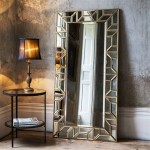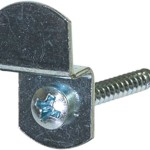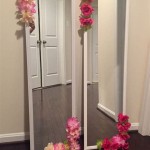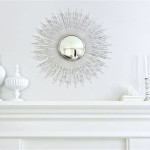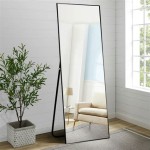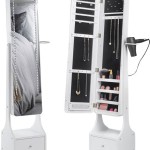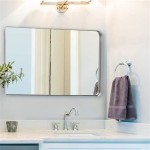Antique Dresser Mirrors: A Reflection of History and Style
Antique dresser mirrors offer more than just a reflection; they provide a glimpse into past eras, showcasing the craftsmanship and design aesthetics of bygone times. These pieces can elevate a bedroom from simple to sophisticated, adding a touch of history and elegance to any space. Whether part of a matching dresser set or standing alone as a statement piece, antique dresser mirrors hold a unique charm and enduring appeal.
Key Features of Antique Dresser Mirrors
Several key features distinguish antique dresser mirrors and help determine their value and historical significance. Careful examination of these elements can help collectors and enthusiasts identify genuine antique pieces and appreciate their unique qualities.
* **Mirror Plate:** The condition of the mirror plate itself is crucial. Antique mirrors often exhibit some degree of foxing, silvering loss, or minor imperfections, which are considered acceptable signs of age and can even add to their character. However, significant damage or warping can detract from the mirror's value. * **Frame Material:** Antique dresser mirrors feature a variety of frame materials, including wood, metal, and sometimes even composite materials. The type of wood, its finish, and any decorative carvings are important indicators of the mirror's age and style. Metals like brass, bronze, and silver were also commonly used, adding a touch of opulence. * **Style and Design:** The overall style and design of the mirror frame are essential clues to its era. Victorian mirrors often feature ornate carvings, while Art Deco mirrors showcase geometric shapes and sleek lines. Identifying the style helps determine the mirror's approximate age and origin.
Popular Styles of Antique Dresser Mirrors
Antique dresser mirrors encompass a diverse range of styles, each reflecting the design trends of its specific period. Recognizing these styles can assist in authenticating and appreciating these beautiful pieces.
* **Victorian (1837-1901):** Victorian-era mirrors are often characterized by elaborate carvings, featuring floral motifs, scrolls, and intricate details. They frequently used dark woods like mahogany and walnut and may incorporate inlaid materials like mother-of-pearl. * **Art Nouveau (1890-1910):** Art Nouveau mirrors embrace flowing, asymmetrical lines, inspired by nature. They often depict stylized floral patterns, insects, and curving forms. * **Art Deco (1920-1939):** Art Deco mirrors showcase geometric shapes, clean lines, and a more streamlined aesthetic. Materials like chrome, glass, and Bakelite were commonly used, reflecting the era's emphasis on modernity. * **Edwardian (1901-1910):** Edwardian mirrors often feature a more delicate and refined aesthetic compared to the heavier Victorian style. Light woods like satinwood were popular, and designs often incorporated floral garlands and lighter ornamentation.
Caring for Antique Dresser Mirrors
Preserving the beauty and integrity of antique dresser mirrors requires careful handling and appropriate cleaning methods. Proper care ensures these pieces remain cherished heirlooms for generations to come.
* **Cleaning the Mirror Plate:** Clean the mirror plate using a soft, lint-free cloth and a gentle cleaning solution specifically designed for mirrors. Avoid harsh chemicals or abrasive cleaners, which can damage the delicate silvering. * **Cleaning the Frame:** The appropriate cleaning method for the frame depends on the material. Wood frames can be cleaned with a slightly damp cloth and a mild wood cleaner. Metal frames can be polished with a suitable metal polish, taking care not to scratch the surface. * **Handling and Storage:** When handling antique mirrors, always support the frame and avoid touching the mirror plate directly. If storing an antique mirror, ensure it is in a stable, climate-controlled environment, protected from dust and extreme temperatures.
Identifying Reproduction Mirrors
The market for antique furniture includes reproductions, and dresser mirrors are no exception. Being able to distinguish between a genuine antique and a reproduction is essential for collectors.
* **Construction Techniques:** Examine the construction techniques used in the mirror. Older mirrors often exhibit hand-crafted joinery, while reproductions may use modern manufacturing methods. * **Materials:** The materials used can also offer clues. Modern reproductions may use materials not available during the purported era of the mirror. * **Wear and Patina:** Genuine antique mirrors will typically exhibit some signs of wear and aging, such as patina on the frame or minor imperfections in the mirror plate. Reproductions often lack this natural aging.
Displaying Antique Dresser Mirrors
Antique dresser mirrors can be showcased in various ways to enhance their beauty and complement the surrounding décor. Careful consideration of placement and lighting can maximize their visual impact.
* **Placement:** Consider the size and style of the mirror when selecting a location. A large, ornate mirror might serve as a focal point above a fireplace mantel, while a smaller, simpler mirror might be placed atop a dresser or vanity. * **Lighting:** Proper lighting can enhance the beauty of the mirror and its reflection. Avoid placing the mirror in direct sunlight, which can damage the frame and the mirror plate over time. Soft, diffused lighting is ideal for showcasing the mirror's details. * **Complementary Décor:** Surround the mirror with décor that complements its style and era. For example, a Victorian mirror might be paired with antique furniture and accessories, while an Art Deco mirror might be complemented by sleek, modern pieces.
The Value of Antique Dresser Mirrors
Several factors contribute to the value of an antique dresser mirror, making each piece a unique investment.
* **Rarity:** Rare or unusual mirrors, particularly those from highly sought-after periods or designers, tend to command higher prices. * **Condition:** The overall condition of the mirror, including the frame and the mirror plate, significantly impacts its value. Mirrors in excellent original condition are generally more valuable than those requiring restoration. * **Provenance:** A documented history or provenance can increase a mirror's value, especially if it can be traced back to a notable owner or historical event. * **Maker or Designer:** Mirrors by renowned makers or designers can be highly sought after by collectors, often fetching premium prices.

Before And After Antique Dresser With Mirror

Nice Wood Dresser With Mirror Pics Amazing Or Antique Dressers M Shabby Chic Oak Bedroom Furniture

Small Antique Dresser With Mirror Midtown Furniture

Repurposing A Dresser For Vintage Look Dabbling Decorating

Vintage Dresser With Mirror Chairish

How To Repurpose An Old Swivel Mirror Confessions Of A Serial Do It Yourselfer

Antique Tri Fold Mirror Dresser Princessantiques Net

Antique Dresser With Marble Top Mirror 48 X 20 80 H Castle Rock Home Garden

30 Stylish Bedroom Dressers Ideas With Mirrors That You Need To Try Antique Oak Furniture Dresser Mirror Shabby Chic

Heirloom Dresser And Mirror Set Antique White 10 Drawers Dcg S

